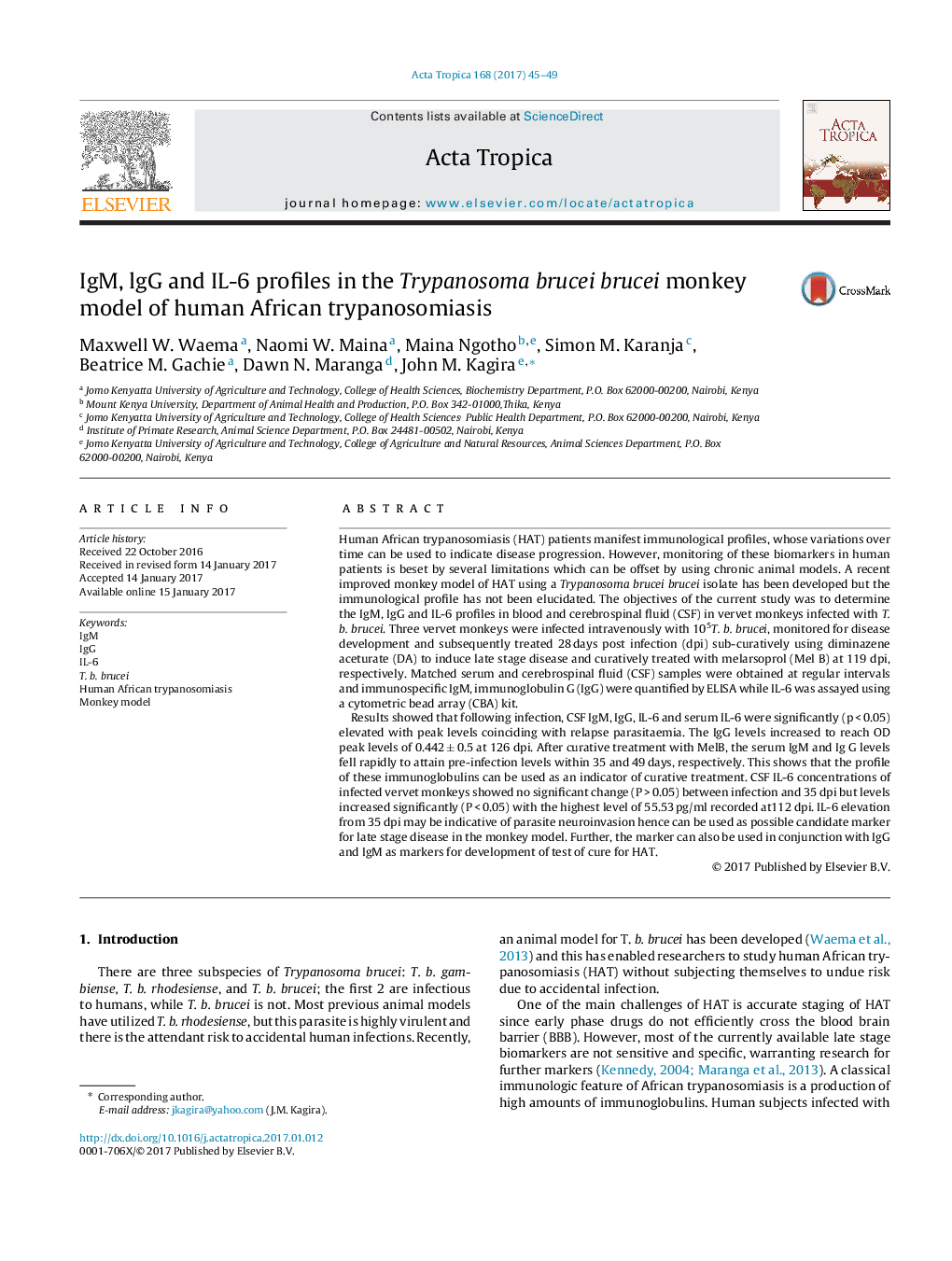| Article ID | Journal | Published Year | Pages | File Type |
|---|---|---|---|---|
| 5670932 | Acta Tropica | 2017 | 5 Pages |
Human African trypanosomiasis (HAT) patients manifest immunological profiles, whose variations over time can be used to indicate disease progression. However, monitoring of these biomarkers in human patients is beset by several limitations which can be offset by using chronic animal models. A recent improved monkey model of HAT using a Trypanosoma brucei brucei isolate has been developed but the immunological profile has not been elucidated. The objectives of the current study was to determine the IgM, IgG and IL-6 profiles in blood and cerebrospinal fluid (CSF) in vervet monkeys infected with T. b. brucei. Three vervet monkeys were infected intravenously with 105T. b. brucei, monitored for disease development and subsequently treated 28 days post infection (dpi) sub-curatively using diminazene aceturate (DA) to induce late stage disease and curatively treated with melarsoprol (Mel B) at 119 dpi, respectively. Matched serum and cerebrospinal fluid (CSF) samples were obtained at regular intervals and immunospecific IgM, immunoglobulin G (IgG) were quantified by ELISA while IL-6 was assayed using a cytometric bead array (CBA) kit.Results showed that following infection, CSF IgM, IgG, IL-6 and serum IL-6 were significantly (p < 0.05) elevated with peak levels coinciding with relapse parasitaemia. The IgG levels increased to reach OD peak levels of 0.442 ± 0.5 at 126 dpi. After curative treatment with MelB, the serum IgM and Ig G levels fell rapidly to attain pre-infection levels within 35 and 49 days, respectively. This shows that the profile of these immunoglobulins can be used as an indicator of curative treatment. CSF IL-6 concentrations of infected vervet monkeys showed no significant change (P > 0.05) between infection and 35 dpi but levels increased significantly (P < 0.05) with the highest level of 55.53 pg/ml recorded at112 dpi. IL-6 elevation from 35 dpi may be indicative of parasite neuroinvasion hence can be used as possible candidate marker for late stage disease in the monkey model. Further, the marker can also be used in conjunction with IgG and IgM as markers for development of test of cure for HAT.
Graphical abstractIL-6 elevation is a strong candidate marker for late stage disease in the T. b. brucei non-human primate model.Download high-res image (122KB)Download full-size image
